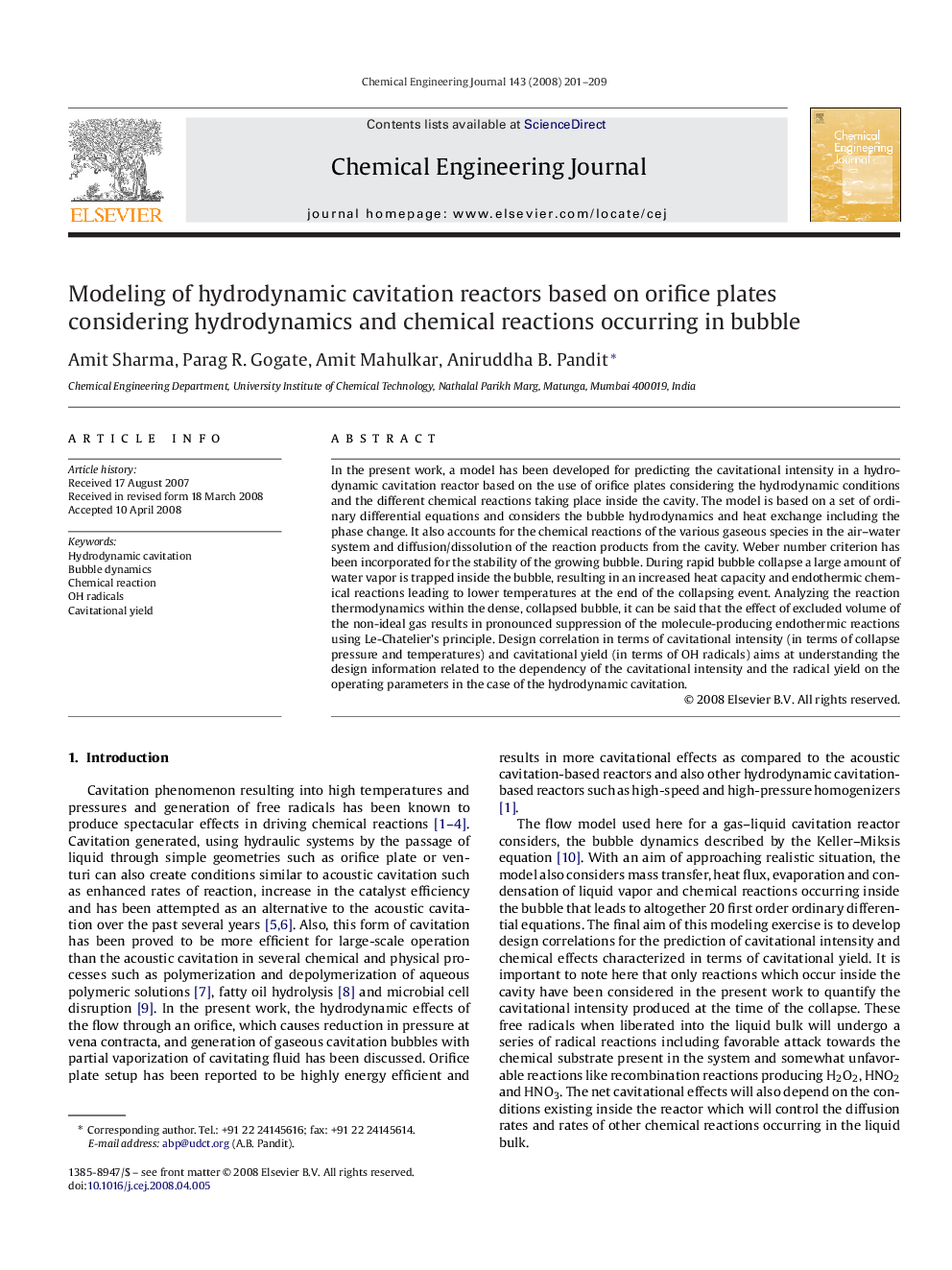| Article ID | Journal | Published Year | Pages | File Type |
|---|---|---|---|---|
| 152922 | Chemical Engineering Journal | 2008 | 9 Pages |
In the present work, a model has been developed for predicting the cavitational intensity in a hydrodynamic cavitation reactor based on the use of orifice plates considering the hydrodynamic conditions and the different chemical reactions taking place inside the cavity. The model is based on a set of ordinary differential equations and considers the bubble hydrodynamics and heat exchange including the phase change. It also accounts for the chemical reactions of the various gaseous species in the air–water system and diffusion/dissolution of the reaction products from the cavity. Weber number criterion has been incorporated for the stability of the growing bubble. During rapid bubble collapse a large amount of water vapor is trapped inside the bubble, resulting in an increased heat capacity and endothermic chemical reactions leading to lower temperatures at the end of the collapsing event. Analyzing the reaction thermodynamics within the dense, collapsed bubble, it can be said that the effect of excluded volume of the non-ideal gas results in pronounced suppression of the molecule-producing endothermic reactions using Le-Chatelier's principle. Design correlation in terms of cavitational intensity (in terms of collapse pressure and temperatures) and cavitational yield (in terms of OH radicals) aims at understanding the design information related to the dependency of the cavitational intensity and the radical yield on the operating parameters in the case of the hydrodynamic cavitation.
